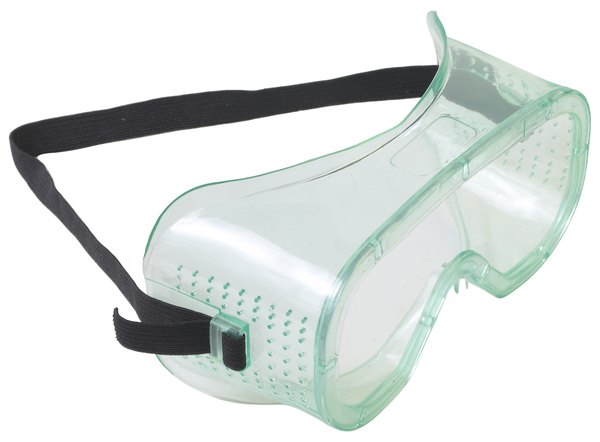
Also known as nitrocellulose, flash paper is an essential part of the magician's tool kit. This paper is coated in a gel substance that burns very quickly, creating an eye-catching flash for the audience. Flash paper is available through specialty shops, but is costly. Those with training and experience handling hazardous chemicals may prefer to produce their own flash paper. This process uses both nitric and sulfuric acids, which burn the skin, clothing and other materials. Anyone working with these chemicals should exercise care.
Preparing the Acid Solution

Put on safety gear. You should wear safety glasses, a mask, gloves and a protective apron at all times. Set up your work area outside or under a fume hood.
Pour 8 milliliters of concentrated sulfuric acid into the glass measuring cup.
Mix 10 milliliters of concentrated nitric acid into the sulfuric acid, stirring constantly. Do not lean over the mixture. Do not breathe in the fumes that the mixture produces. Be aware that the liquid will get very hot while the two acids are combining.
Pouring the Acid Solution on the Paper
Place two or three squares of cotton paper or thin cotton fabric in the glass dish. Spread them out flat and evenly spaced. If it is warm outside or you are working in a hot room, set the dish inside an ice bath to help keep it cool.
Pour the acid solution over the paper in the dish. Do this carefully and slowly. Make sure that each piece of paper is soaked with the solution.
Allow the cotton paper to sit for 10 minutes. Do not disturb it. The solution will turn into a gel on the paper. However, it is still acidic. Do not touch with bare skin.
Rinsing and Drying the Flash Paper
- Concentrated sulfuric acid
- Concentrated nitric acid
- Heat tempered glass measuring cup
- Metal stirring spoon
- Heat tempered glass dish or bowl
- Cotton fabric or paper
- Sodium bicarbonate
- Glass or metal buckets
- Gloves
- Safety glasses
- Protective apron
Keep a bucket filled with a mixture of water and dissolved sodium bicarbonate in case of acid spills.
Clearly label acids and store in well-sealed glass containers. Other materials may dissolve over time.
Always cover your eyes and skin when working with acids. Do not breathe in acid fumes. This is hazardous to your health.
Exercise great care at all times when manufacturing flash paper. Flash paper burns fast and hot. It can be a burn hazard if not handled properly during use.
Pour clean water into the dish to help dilute the remaining acids. Pour acidic water into a glass or metal bucket. Repeat this step several times until the acids are nearly gone.
Pour a mixture of sodium bicarbonate and water into the dish to completely neutralize the paper and any residual acids. Pour into the metal bucket.
Pick up the paper, which should be neutral now. Place on a flat surface and allow to dry completely. When dry, it is ready to use as flash paper.
Pour sodium bicarbonate into the bucket of acidic water to completely neutralize it. Once the mixture is no longer acidic, you can pour it down the drain to dispose of it. Clean all utensils and containers with plenty of water and sodium bicarbonate.
Things You'll Need
Tips
Warnings
References
Tips
- Keep a bucket filled with a mixture of water and dissolved sodium bicarbonate in case of acid spills.
Warnings
- Clearly label acids and store in well-sealed glass containers. Other materials may dissolve over time.
- Always cover your eyes and skin when working with acids. Do not breathe in acid fumes. This is hazardous to your health.
- Exercise great care at all times when manufacturing flash paper. Flash paper burns fast and hot. It can be a burn hazard if not handled properly during use.
Photo Credits
dolgachov/iStock/Getty Images
